At the Munich Security Conference in February, the US vice-president, JD Vance, informed his hosts that they were a wretched bunch of effete, cheese-eating milquetoasts with whom his country could no longer be bothered (I paraphrase but not that much). There has since been lots of hand-wringing about how the continent should respond to the threat of US abandonment. One of the most robust responses that I’ve heard came from the former commander of the US Army in Europe, Lieutenant General Ben Hodges. Speaking to The Foreign Desk at the Delphi Economic Forum in April, he suggested (and I paraphrase barely at all) that Europe should stop whining, recognise that it is a superpower and start acting like one.
Hodges is correct. Europe’s combined GDP and collective military spending dwarf that of Russia, its only meaningful external threat. But perhaps neither Russia nor Europe can see past the fact that, for all the supranational organisations that European countries might have joined, the continent remains a kaleidoscope of nationalities. The idea of formally uniting them is not new; it has been proposed in various forms by Winston Churchill, Leon Trotsky and George Orwell. But is its moment looming?
There are many examples of disparate democratic polities becoming one. The colonies of Australia formed a federation in 1901. The US became a unitary bloc in stages from the Declaration of Independence in 1776 to the admission of Hawaii in 1959 (and, as Donald Trump sees it, the country isn’t done yet). Indeed, many of Europe’s modern states were once disorderedly patchworks of fiefdoms.
In many respects, it doesn’t seem that difficult. Europe already has a flag, a parliament and a president. (The latter is not directly elected but that can be fixed. Who wouldn’t enjoy the sight of a Finnish candidate kissing babies in Greece or an Irish contender shaking hands in Montenegro?) Most of Europe already uses the same currency. It is true that there are cultural differences but I would contend that Poland and Portugal, for example, have at least as much in common as Alabama and Connecticut. The US turning away from Europe would have seemed, until recently, unthinkable. A United States of Europe is, at the very least, thinkable.
Mueller is the host of ‘The Foreign Desk’ on Monocle Radio.
A growing number of young people are ditching technology and screen time for human connection. Reports have shown an increase in church attendance among 18-to-24-year-olds, who mainly cited their desire for a sense of belonging, rather than a belief in a higher power. Plenty of smartphones are also being ditched as part of this back-to-basics movement.
The trend appears to be catching on in the design community too. In partnership with Design Singapore Council at its Future Impact exhibition, Monocle hosted a series of radio roundtable discussions on the future of the industry at this year’s Milan Design Week. Nearly every single participant mentioned their desire to get back to basics, away from technology and towards humanity.
“We are surrounded by technology so we need more real things in our home,” said Milan-based art director and product designer Federica Biasi. She outlined her desire to expand her practice in a way that embraces nature and handicrafts. It’s a sentiment supported by Lagos-based designer Nifemi Marcus-Bello, who said that his most coveted products are those that show signs of his hand in their creation. “People want to have feelings that are more authentic and raw,” he said. “You get that with crafts. They allow you to consider the emotional side of design.”
The duo underlined a growing appreciation for the unique qualities and imperfections that come with handmade items, in stark contrast to the uniformity of mass-produced goods or AI-designed products, which can feel impersonal and soulless.
There’s also a benefit for the designers themselves. “We have all these tools of convenience today, led by AI, but how are you going to learn to be a great designer if you take short cuts?” said Swiss-US designer Yves Béhar. “In order for something great to come out, you have to put in the time, energy, sweat and tears.” Going back to basics, then, might not only be good for the products that we find in our homes but the people who make them too.
Take the winding road west out of Palma and you’ll soon find yourself in the low, craggy limestone mountains and pine-tree-lined valleys that frame the Mallorcan capital. Here, there are leafy suburbs with houses that sit prominently in the landscape, some boldly clinging to cliff-faces while others, three-storeys high, announce themselves from the road. Most enjoy east-facing views of the city and Mediterranean Sea. But House in the Mountains is different: it seeks to celebrate Mallorcan landscape and identity by turning its back to these trademark vistas and retreating from view altogether.
“It’s very discreet,” says Paloma Hernaiz, the co-founder of Palma-based architecture studio Ohlab, established with her work and life partner Jaime Oliver in 2007. The duo walk Monocle through the project, which the studio has newly completed. “We’re still very close to Palma but we positioned the house so that it’s not visible from the road or neighbouring properties,” says Hernaiz. “It makes you feel like you are in the countryside.”


The residence, despite being only a 20-minute drive from the city centre, does indeed feel remote. It sits on a site that is covered with rock carnations, fan palms and large boulders, and has views south across a forested valley rather than towards the city and the sea. “The first few times we came to this site, we would walk around with the client, discussing how much they loved its unspoiled nature,” adds Oliver, explaining the brief. “The client showed respect and care for the actual landscape, so there was a need to integrate it into the house.”
The resulting floor plan embraces the area’s naturally askew topography. The architects worked with, not against the slope, creating a series of interconnected platforms that house a dining room, a kitchen, a living room, bedrooms and a studio, respectively, and gently cascade down the site. Most of these platforms – with the exception of the kitchen and studio – sit just off a south-facing courtyard that features garden beds planted with native species, mirroring the untouched landscape around the building. Thanks to an infinity edge, the elongated swimming pool, which sits to one side of the courtyard and is lined with pinewood sunloungers, blends in seamlessly with the vegetation beyond.
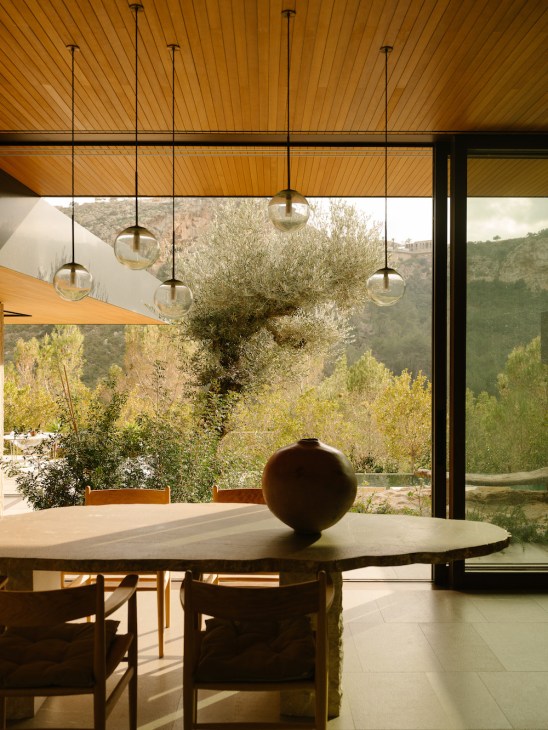

This platform-led approach minimised the excavation work required, allowing the architecture to be positioned on the site in a way that left it mostly untouched. “We wanted to celebrate the rocks,” says Oliver. To do so, Ohlab transformed some of the rocky outcrops that existed on site into natural walls, which line a corridor leading to the bedrooms and support the carport.
The architects also partnered with local manufacturer Huguet to develop a bespoke terrazzo cladding for additional artificial walls. Composed of recycled materials and aggregates, including some from the site’s limited excavation works, this custom product is naturally coloured to match the pigment of the local rock; each piece has saw-cut grooves in its surface, which have been roughed up by hammers, to create an irregular finish that references the rocky surroundings. “The aim with this cladding is not to imitate rock,” says Oliver. “It’s more abstract; it’s like we have domesticated it. It’s important because the rock is the narrative of the house.”
This championing of the Mallorcan landscape and materiality continues inside: the dining table and kitchen counter are made from Binissalem limestone quarried nearby. The latter is sculpted from a single block, with the hard, grey-hued limestone providing a solid foundation for cooking and preparing meals. It’s enhanced by precision-built custom woodwork and untreated brass fixtures that introduce warmth and counterbalance the rugged nature of the stone.
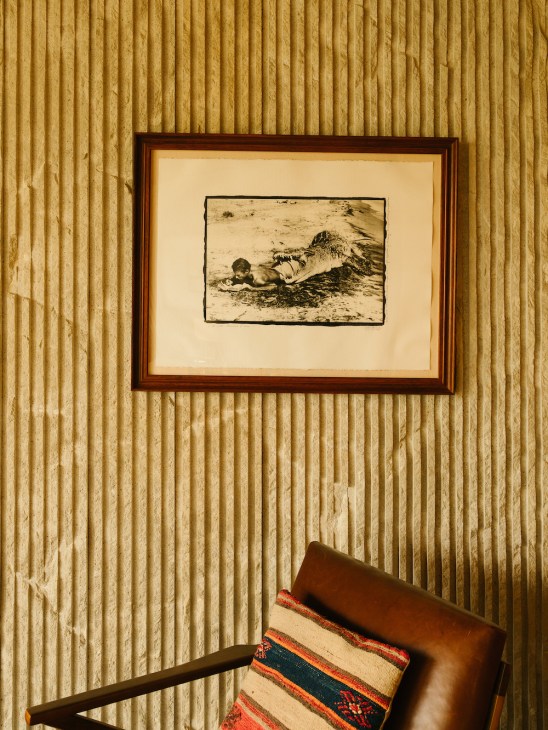
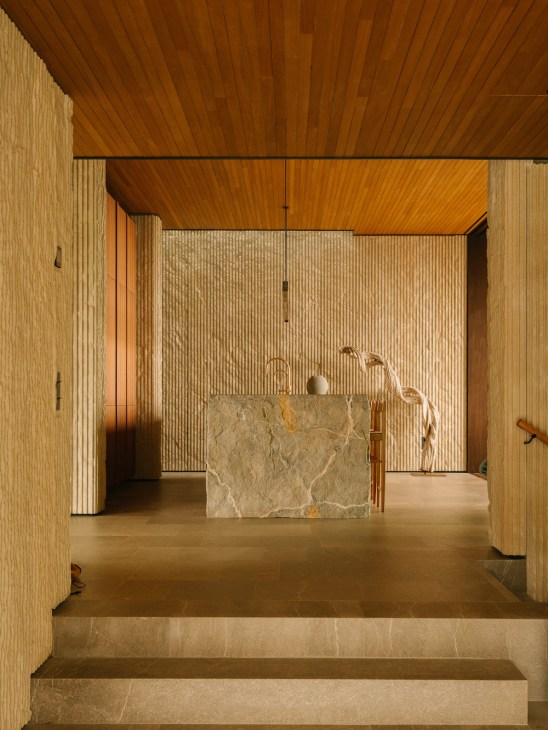
Additionally, there’s lighting created by Palma-based firm Contain, which includes bespoke table lamps made from blackened natural brass. These are complemented by existing Contain products such as the Ohlab-designed H Pendant Lamp, a long overhead fixture with a H-shaped profile, which now hangs above the kitchen bench. Notable furniture pieces by La Pecera, a Mallorca-based furniture shop and brand, include the living room’s Robusta armchairs.
Mallorcan identity is celebrated through the architect’s embrace of the microclimate too. Oliver and Hernaiz looked to enhance the local biodiversity by creating a green roof that functions as a thermal insulator for the house, which helps reduce energy demand and improve air quality. The duo also worked with the prevailing winds and natural light to ensure that the home would be in tune with the environment by orienting the majority of the building along a north-south axis. “This positioning means that the sun enters all the way into the house during winter, with awnings blocking it out in the summer, so it remains very fresh,” says Oliver.
Cooling thermal breezes are harnessed thanks to this orientation too, with a sea-to-mountain breeze rolling south through the valley in the mornings and a mountain-to-sea coming from the north in the evenings. Windows on both façades also ensure there is plenty of cross-ventilation.
All of this builds upon the initial move to orient the home north-south to provide both privacy and a verdant vista. “It purposefully gives its back to the sea and city, for privacy, light and energy efficiency,” says Oliver. “It feels like you’re in the middle of the mountain and part of the Mallorcan landscape.”
Ohlab: On sustainability
House in the Mountains is a prime example of Ohlab’s architectural ethos, which is defined by building strong relationships between their architecture and the local environment. It’s an approach that’s easy to classify as “green” or “sustainable” – but the duo are keen to dispel the notion that this doesn’t mean such architecture can be remarkable or fun.
“We want to attract people not just because a project we do is sustainable but because the architecture is cool,” says Oliver. “We are tired of the discourse that ‘you have to like it because it is sustainable’. That’s a lazy argument. I want our architecture to feel a bit naughty – like having a really good, well-made burger.”
Naughtiness aside, Oliver and Hernaiz are keen to stress that they still consider carbon footprint and energy efficiency in all their projects. “In general terms, we try to produce locally, benefit local communities and minimise the carbon footprint,” adds Oliver.
Summer camp-collar shirt
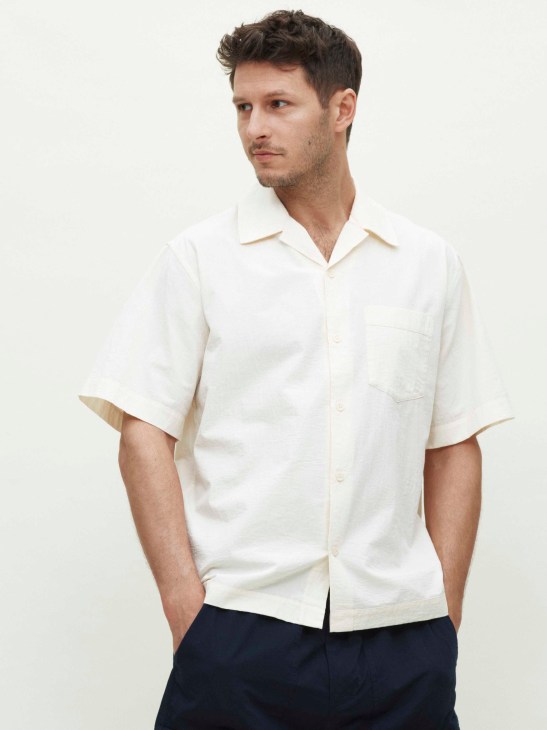
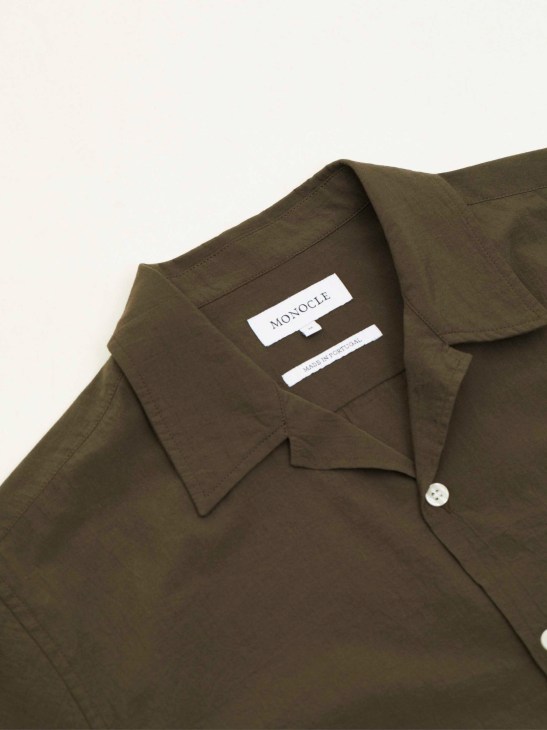
The Monocle summer camp-collar shirt is is washed to create a crinkled texture and a soft, timeworn feel, and it fastens with mother-of-pearl buttons. Made from organic cotton woven in Japan, this breathable style layers effortlessly for hot summer days.
€175.00
Colour: Ecru or olive
Material: 100 per cent cotton
Made in: Portugal
Oxford popover shirt

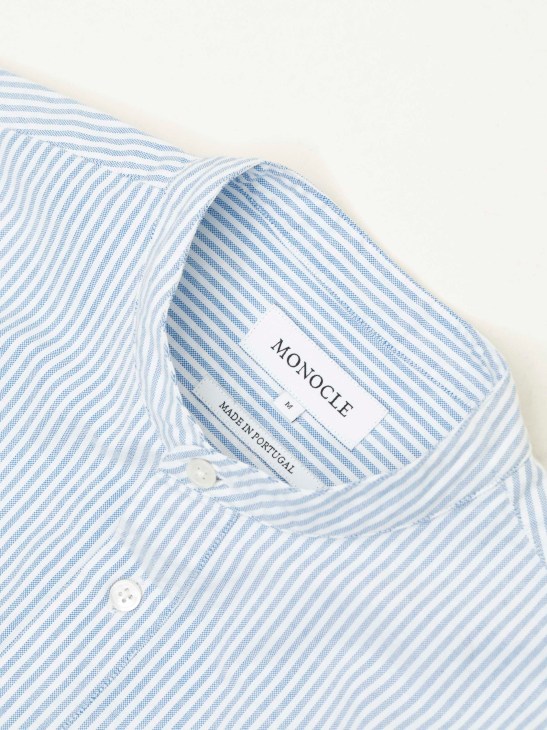

A versatile addition to any wardrobe, this popover strikes a balance between the casual comfort of a polo and the refined look of a dress shirt. Tailored from the same fabric as Monocle’s oxford button-down, it has a sleek collar and mother-of-pearl buttons.
€165.00
Colour: Blue stripe or white
Material: 1oo per cent cotton
Made in: Portugal
Cotton twill cap
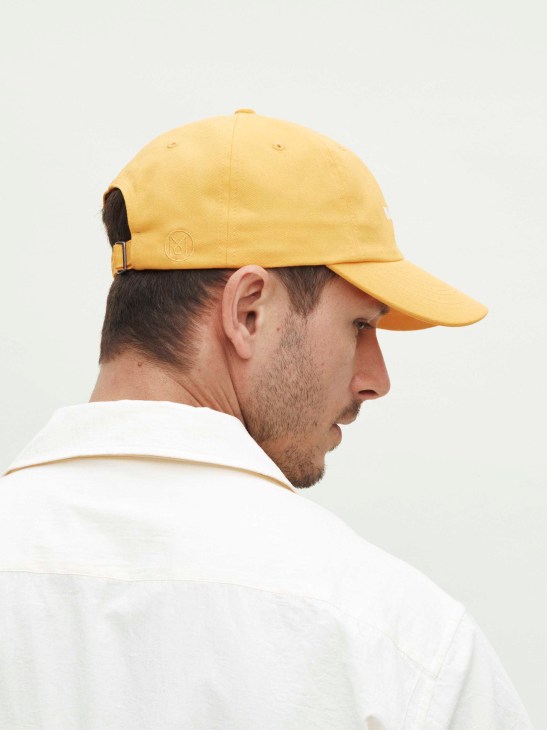

Top off your look with this colourful, versatile cap. Made in California from 1oo per cent twill, this signature Monocle cap in gold, dark green or navy features an embroidered Monocle branding to the front and a tonal Monocle logo at the back. It’s perfect for walks through cities, a round of golf or simply masking a bad hair day.
€70.00
Colour: Gold, dark green or navy
Material: 1oo per cent cotton
Madein: USA
Summer cotton overshirt

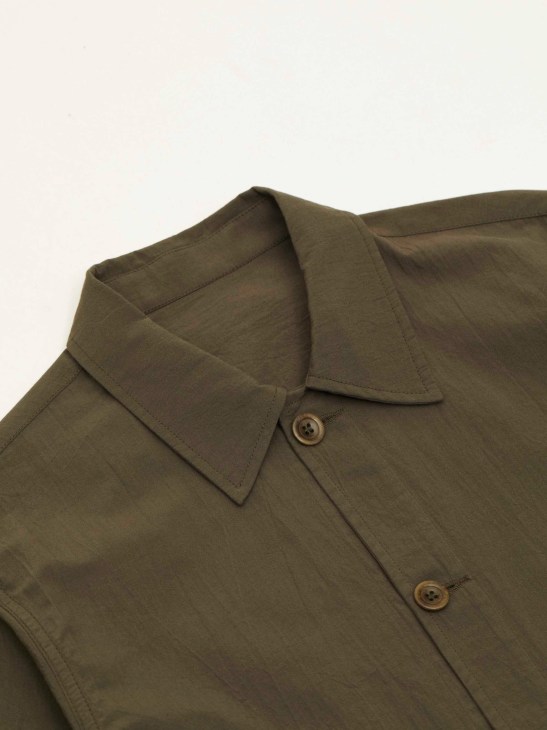

Turn to Monocle’s take on this seasonal favourite. This overshirt delivers on both style and comfort. Made from organic cotton and woven in Japan’s Nishiwaki region, it has a natural washed finish, patch pockets and Corozo buttons.
€245.00
Colour: Olive or navy
Material: 1oo per cent cotton
Made in: Portugal
Sadiq Khan believes that London is poised for a pivotal moment of opportunity and growth and is urging the world to take notice. In a year he calls a “game changer” for the capital, the mayor is championing a rare alignment across national and local government – one that could unlock long-awaited investment and development potential.
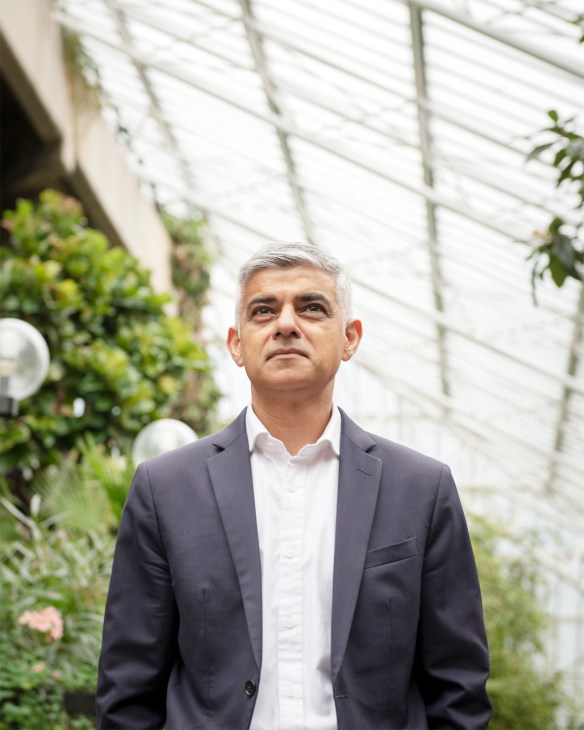
Speaking to Monocle’s editor in chief Andrew Tuck earlier this year in Cannes, Khan shared why now is the moment to back London’s future and what this means for the city’s trajectory.
Great to see you, Sadiq. Tell us, why is this year so important for London?
This year is a real turning point for the city and for the country in terms of alignment. We’ve got a new national government whose number-one mission is growth, which finally puts us on the same page. I can say candidly to financiers, developers, housing providers and everyone here in Cannes that now is the time to buy a stake in London.
The stars have aligned in terms of certainty and stability, which is what stakeholders and contractors are looking for. We’ve brought together not only myself as mayor but also the 32 boroughs, the municipality, Network Rail and others under the umbrella of a delegation that we call “Opportunity London”. The city wants good, inclusive and sustainable growth but investors crave stability. That is why we’re launching 20 live projects for people to take an interest in.
Does that include leisure and student housing?
It’s a whole piece. “Opportunity London” includes a can-do prime minister, mayor and councils, and a range of housing that is affordable, market value, built-to-rent and for students. Old Oak Common is one of Europe’s largest brownfield sites so there’s lots of potential there. The land that we own in the Royal Docks also offers big opportunities so we have come up with offers for joint ventures.
We’ve opened one of the world’s finest new rail lines, the Elizabeth line, and we want to extend the Bakerloo line south and the Docklands Light Railway (DLR) to Thamesmead. We also want to open the West London Orbital. All of this will unlock more housing and regeneration.
You’ve got some planning powers and convening influence but many developers still say that economic headwinds, financing and quotas make it hard to get projects off the ground. Has the state of the financial markets held you back?
Let’s look at the past few years. Under my mayoralty, we’ve had more homes completed than at any time since the 1930s – about 10,000 more per year than my predecessor – and we’ve started building affordable housing and council homes again. But you’re right: high interest rates and the lack of confidence in the market have been huge challenges. Brexit, especially the hard version, caused a skilled-labour shortage and inflation in construction. Then we had the coronavirus pandemic followed by Liz Truss’s mini-budget and Vladimir Putin’s invasion of Ukraine.
Now interest rates are lower. Confidence is returning and, for the first time in a long time, the national government, the mayor and local councils are all aligned. Show me another global city where that’s the case.
So I say to investors: this is your moment. We can give you certainty and stability.
The labour pool in construction has been badly hit by Brexit. Are there enough skilled workers to deliver your housing ambitions?
We need to train more Londoners. That’s why I published “The London Growth Plan”; a 10-year vision to grow our economy by £100bn (€118bn). A key part of that is talent strategy. We need plasterers, bricklayers, AI specialists, quantum coders, roboticists, life scientists and creatives. We’re retraining the city’s residents for new careers. In the past five years under the adult-education budget, we’ve trained one million people. Half of them saw that their wages increased by more than 10 per cent. It works. But challenges remain: construction inflation and skilled-labour shortages. We must continue to respond.
But can you ever build enough?
That’s the big question. Our city has grown consistently over the past 40 years. People want to relocate here, which is a good problem to have compared to declining cities elsewhere, but we haven’t planned well enough for that growth.
Over the past eight years we have built about 45,000 homes annually. The government now wants to achieve 88,000 per year, a figure that we haven’t hit since 1934. I’m determined to get as close as we can.
We’re working on a new pro-growth “London plan” that will rethink the green belt with a brownfield-first approach. We’re looking for good development and developers tell me, “We don’t want a free hand – we want certainty.”
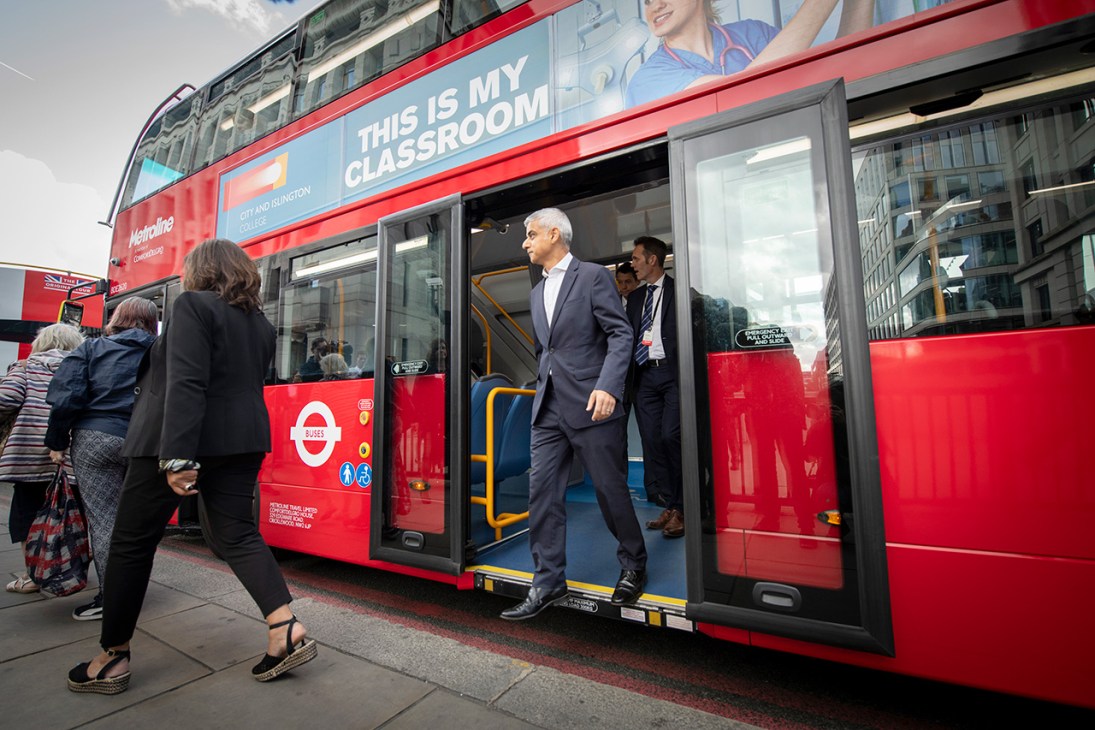
There is a lot of talk about ending nimbyism. How do you balance that with quality, character and public space?
The previous mayor had a laissez-faire attitude about urban planning that led to soulless density. We want homes, not units. So our plan mandates minimum room sizes, green roofs and community spaces.
Local councils also have their own plans. Camden isn’t Croydon and Croydon isn’t Havering. But councillors often face political pressure from small groups that oppose new developments simply because they want nothing built. We need to empower councils, mayors and the central government to push through good plans and meet real demand.
Would you scrap the green belt?
No, that’s a stupid generalisation. Not all green-belt land is pristine. Some of it is low quality and near transport. If the brownfield site is exhausted and there’s poor-quality green-belt space near a station, we should build there sensibly and at high density.
You mentioned how transport corridors unlock housing. What’s the potential there?
Transport systems transform cities. The Elizabeth line is proof of that – a network of 40 stations, new homes and new energy. Tony Pidgley lobbied me hard for a station at Woolwich – and look at Woolwich now. It’s the same with the Northern line extension at Battersea Power Station. We’ve got new buses across London too.
If we extend the DLR to Thamesmead then that’s 40,000 new residences. Extend the Bakerloo line south and it’s tens of thousands. As long as I’m mayor, London won’t stand still.
What about Oxford Street?
A work in progress. Oxford Street was once buzzing and now it’s tired. We need a development corporation and third-party investments. If we pedestrianise Oxford Street, it can host retail, leisure and culture again. Flagship shops deserve a world-class location.
Heathrow is another polarising issue. You’re cautious about expansion. Is that a fight that you’ll have with the government?
Aviation is important for our economy but I support a better Heathrow, not a bigger one. The noise pollution already affects more people than all major European hubs combined – and that’s with just two runways.
Air quality around the airport is still poor and a third runway would only worsen it. Plus, the Climate Change Committee says that aviation growth must meet carbon goals. Can Heathrow do that?
Then there’s the infrastructure; rerouting the M25, tunnelling, upgrading the Piccadilly line, the Southern Rail and the Elizabeth line. It’s not the best use of money. Though I agree with the government on most issues, on this, maybe not.
There’s a tension now between livability and economic viability. Do you think that people are wary of rapid urbanism?
That’s a profound question. Urbanisation is accelerating and more than 50 per cent of the global population live in cities, heading for 65 per cent by 2050.
We need to grow sustainable, green, human-oriented cities. The “London plan” prioritises public transport, cycling, walkability, no car parks near stations, green roofs and walls, and rewilding urban spaces.
We’ve brought back bats, bees, and beavers – Justin and Sigourney Beaver, to be precise. We’ll clean up the river so that residents can swim safely and enjoy nature in the city. We’re building homes and creating more jobs, all while embracing the challenge.
Finally, what still keeps you up at night? What’s the hardest part of being mayor?
Street crime remains a concern but we have made progress. We currently have the lowest rate of teenage homicides in 13 years and under-25 deaths are the lowest they have been in 22 years. Burglary is also down and we’re tackling phone theft by working with police and phone companies to make second-hand phones worthless, just like car stereos and TomToms once were. We’re also working with the private sector to design out crime and create a better city. Tough on crime and tough on causes.
Sadiq Khan, mayor of London, thank you for joining us.
Merci beaucoup.
If you think you’re having a bad week at work, spare a thought for the Filipino strategists and advisors of the defeated candidates in Davao City’s recent mayoral election. They all lost by colossal margins to an 80-year-old who is not only awaiting trial on charges of crimes against humanity but is doing so in a foreign prison. Not for the first time, Rodrigo Duterte has defied all conventional wisdom about politics – as well as common sense.
Duterte was the mayor of Davao City – the Philippines’ third-largest urban centre in terms of population – on and off from 1988 to 2016, when he began an eventful stint as the country’s president. During that time, his children Sara and Sebastian took turns running the metropolis. Sara is currently the vice-president of the Philippines and Sebastian will serve as his father’s vice-mayor. It was as president that Duterte racked up the indictment that led him to The Hague in March. Human-rights groups estimate that his brutally literal interpretation of the phrase “war on drugs” led to the deaths of some 30,000 people. Many of those killed might well have been narcotics dealers or traffickers but the police and paramilitaries unleashed by Duterte rarely stopped to confirm this. As recently as last October, he cheerfully testified to a Filipino investigation that he had personally directed an off-the-books death squad of hitmen who he described as “gangsters”.

Duterte always justified the violence of his crackdown on the Philippines’ pestilential drug trade by calling it war. But war is governed by laws. Duterte’s arrest is a welcome reminder that Earth has not completely descended into a Hobbesian free-for-all, even if the planet’s recent history might have given that impression. Over the past few years, Russia has unleashed horrendous violence upon Ukraine for no good reason; Israel, though certainly provoked, has punitively pounded Gaza to rubble; and US citizens have re-elected a convicted criminal as their president.
Yet the rule of law is hanging in there. Russia’s president, Vladimir Putin, and Israel’s prime minister, Benjamin Netanyahu, are wanted men. Neither can travel entirely unburdened by the worry that someone at the other end might try to serve the arrest warrants issued by the International Criminal Court. Should Donald Trump not find a way to install himself as president-for-life, he could still be reacquainted with the charges hanging over him from his first term or – since he’s just getting started – presented with charges pertaining to his second.
All of this might not seem like much but it’s not nothing. If Duterte’s incarceration prompts one despot to pause before barking intemperate orders and consider that actions today can have consequences tomorrow, it might save lives. In 1998, Chilean tyrant Augusto Pinochet was arrested in London by UK police serving an Interpol warrant issued by a Spanish judge for crimes committed during his dictatorship two decades previously. The law has not just a long arm but also a long memory.
Mueller is the host of Monocle Radio’s ‘The Foreign Desk’. For more opinion, analysis and insight, subscribe to Monocle today.
India is a curious holdout when it comes to traditional dress: take any street in Mumbai or any train in New Delhi and you’ll see draped saris, three-piece salwar sets and Madras-checked dhotis fluttering in the breeze, far outnumbering jeans and t-shirts. Homegrown luxury brands have long traded on this pride, with the likes of Sabyasachi and Tarun Tahiliani’s ornate lehengas and gilded occasion accessories, but tastes are evolving: the style set is now mixing Anite Dongre and Dior and tying Hermès silk scarves over Raw Mango shifts. India’s cachet is on the rise – and the luxury market is watching closely.

Western brands have been eyeing the subcontinent for some time but many have seemed unsure on how exactly to go all in. Regulation is one reason: tight restrictions on foreign ownership means that luxury houses must team up with local partners to enter the market. Reliance Retail, headed up by Mukesh Ambani, has come out on top: its Mumbai mall, Jio World Plaza, opened in 2023 and introduced Balenciaga and Dior Mens to the country while expanding the footprint of houses such as Valentino, Versace and Louis Vuitton. Meanwhile, French multi-brand retailer Galeries Lafayette will launch in India in 2025 via a partnership with Aditya Birla Group.
Some brands have already made inroads. For years, Jimmy Choo has crafted Diwali-specific capsule collections. “India has a deep-rooted appreciation for luxury, craftsmanship and glamour,” says the shoe label’s creative director, Sandra Choi.
Namrat Klair, the marketing consultant behind LVMH’s presence in the country, has had a front-row seat to India’s growing appetite for luxury. “Over the past decade and particularly following the coronavirus pandemic, we’ve seen a major shift,” she tells Monocle. When travel was restricted, consumers began shopping domestically – and brands rose to the occasion by upping their in-person presence. They finessed their in-store offerings and pushed for access to collections in step with the global market. Chanel’s managing director of India, Amit Goyal, agrees: Chanel customers are now seeking “exceptional client experiences” at home as well as abroad.
Since Chanel’s entry into the Indian market in 2005, the luxury landscape has shifted significantly. Goyal is optimistic and says he has observed “promising trends” and “consistent growth” for the French maison over the past five years. E-commerce is also promising: the launch of Chanel’s online beauty offering in 2024 was “met with enthusiasm, notably from tier-two and tier-three cities,” he adds. Goyal also teases the arrival of a new Mumbai outpost, which would mark the house’s 10th retail point in the country. In the wake of China’s slowdown and India’s rising purchasing power – the percentage of ultra high-networth individuals in the country is set to balloon by 50 per cent by 2028 – this is a market worth keeping an eye on.
In “The Enormous Radio”, John Cheever’s noted short story from 1947, a Manhattan couple purchases the eponymous appliance to replace a malfunctioning model. They soon find that it plays more than music – it picks up their neighbours’ conversations and taps into the undercurrent of the world. They eventually have it fixed but psychic damage remains.
My iPhone also seems to transmit the unending babble of the world. Though unlike Cheever’s radio, it is with me all the time – in a sense, it is me. “The smartphone has become a repository of the self,” writes media scholar Nicholas Carr, “recording and dispensing the words, sounds and images that define what we think, what we experience and who we are.” Some three-and-a-half hours of my daily attention, according to Apple’s Screen Time function, is devoted to my iPhone (to be fair, this does include newspaper apps and Strava). I’ve always thought of this as deeply problematic but lately I’ve been trying to reframe the issue and consider what the iPhone – used “mindfully” – gives me.
I was sitting on my back porch recently, reading magazines and enjoying a warm spring. The very picture of analogue pleasure. Suddenly, I heard an unusual call from out of the cacophony of house sparrows and gray catbirds. I reached for my phone and opened Merlin, the bird-identification app produced by the Cornell Lab of Ornithology, which immediately flagged it as a green heron. After some searching, I spotted said heron – a migratory traveller in my backyard – atop a cypress tree.
Here the device’s sensitive microphone, precise geolocation and access to infinite information helped me to unlock a layer of the world that I might’ve missed. Carr reminds us that information is not necessarily knowledge. But the event prompted a small voyage of discovery and I was soon reading up on what The Sibley Guide to Birds describes as a “solitary, secretive” species.
Even as I neuter the phone in some respects – barring notifications, removing enervating apps such as X – I find myself using it as a very specific tool, often in unexpected places: next to my trowel and secateurs, my most valued gardening tool is crowdsourced plant-identification app PlantNet. At the airport, Flighty provides granular information about my plane while I listen to airfield crosstalk on LiveATC and check traffic movements with FlightRadar24. For all its bad publicity – largely read and shared on the device itself – the phone, in moments such as these, is not taking us out of the moment. Rather, it’s intensifying our sense of presence. Let’s have more of that.
Vanderbilt is a regular Monocle contributor. For more opinion, analysis and insight, subscribe to Monocle today.
We all have memories of a wonderful trip taken, an event attended or a travel highlight that we have held on to and thought, “I must go back there sometime.” We keep meaning to revisit, and it’s just a case of picking the right moment to relive those glorious memories a second time around.
This letter is about one of my own such memories: an annual wine walk held on 1 May in the hills of three German towns – Zwingenberg, Bensheim and Heppenheim – in the state of Hesse, nestled between Frankfurt and Heidelberg. About half a dozen vineyards, spread out among the hills, open their doors to guests and there’s a leisurely stroll of around three to four hours between them all. You’re given a small wine glass with a leather holder to be worn around your neck, allowing you to indulge in the tastings at every stop and continue walking. And if you find a wine that you particularly enjoy, you can buy a bottle and perch yourself on a picnic table for an idyllic interlude.
This part of Germany is known for its white wines – rieslings, weissburgunders, grauburgunders and silvaners. Just make sure to pace yourself so that you’re not stumbling through the rest of the hike because the walk is part of the fun. The weather is usually sunny, the hill trails are picturesque and the mood is appropriately cheerful.
Sounds delightful, right? I did this walk for the first time about 12 years ago, when I lived in Frankfurt and the excursion was an hour’s train ride away. It was clearly a local highlight but word hadn’t spread much beyond the Frankfurt region. The experience struck such a chord that I have been wanting to return for years – and this was finally the time. I booked flights from London for a trip down memory lane. The weather was meant to be glorious, just as it was when I last went.
This time, however, word had indeed spread. My travel partner and I arrived to find a mass of visitors who had done most of their drinking before even getting to the walk itself. I’m not exaggerating when I say that we were literally shuffling shoulder to shoulder in a stream of people so dense that we had to stop in our tracks, waiting to edge our way into the first vineyard just outside of Zwingenberg.
We spent about 20 minutes at the first vineyard, bought a bottle of wine, then waited in another line going out of the same vineyard before giving up on the whole experience – my partner wondering what sort of fresh hell I’d brought her to. It felt as though everyone had suddenly caught on to my memory and ruined it by joining in. Sometimes, precious memories are best left as just that. Trying to recreate the past rarely works and it’s often better to create new memories – or at least just roll with the times.
The funny thing about this walk is that it was still possible to enjoy it. Step just 100 metres from the main trail and you’re suddenly on your own, in the still-glorious hills of one of the world’s most beautiful wine regions. We came back down from our drinking perch at about 16.00, when the crowds had cleared and the walk felt much more like the one from my memories. We also explored other vineyards and trails in the area along the Rhine River, including the Lorelei, which is another favourite of mine. Germany’s Rhine-Main is far less discovered than it deserves to be – and it’s well worth a visit.
Just stay away from my 1 May wine walk. I’ll be back in 20 years to test the waters again, when everyone else has hopefully forgotten about it.
I don’t know how I persuaded them but they gave their permission. I was 16 years old when my parents agreed that, if I saved enough money, I could buy an Interrail card and spend a whole month of the summer school holidays travelling around Europe by train with a friend. At the time I had a job at a local supermarket where, every Friday night and all-day Saturday, I got to stack the shelves, ferret out yoghurts beyond their sell-by dates and, my favourite, sit at the checkout. And so the piggy bank gradually filled up and an Interrail pass was purchased (entitling the bearer to free rail travel across Europe). Also bought: a Thomas Cook “European Timetable” that was about the size of a phone directory (if you remember them) and which listed all the key train schedules.
Over the following weeks we covered a lot of territory. One day we were in Sweden and the next in Austria. We even made it down to the south of France. Our accommodation was a tent or a night train (we scanned the directory for ones that would allow for a decent night’s sleep). We lived off of bread and cheese. My contribution to the GDP of each country we visited was close to zero – I was a cheapskate backpacker. We were living the dream.

There is a good and much-needed debate taking place about how cities can manage tourism in a way that delivers benefits to the citizenry and doesn’t create models where the prevalence of Airbnb’s, for example, erodes the availability of affordable housing for locals to rent. This is a wise and healthy conversation to have. So why does some of the language used make me uneasy?
When you speak to politicians, activists and tourist chiefs, often their proposed solution to the problems they are facing is to get rid of the “bad tourists” and focus on the “good” ones. They talk about making more money from fewer people (day trippers are to be replaced by folk happy to stay a week in five-star accommodation), of attracting people who will spend time delving into the local culture and not just drinking cocktails on the beach all day. In this battle to reshape tourism, the 16-year-old me would today struggle to find myself on any city’s wish list of potential visitors, even if, like many a backpacker, that hurried trip gave me a passion to return to cities again and again and hand over increasing amounts of my salary.
But even the backpacker is held in higher esteem than the true scum of the earth: the mass tourist. These people are the lowest. They arrive by coach and cruise ship, they buy all-inclusive hotel deals, they drink to excess, they move in swarms and they don’t even appreciate the local handicrafts.
Before my parents dropped dead, they were rather partial to a coach-trip holiday organised by their club. Should such people really be excluded from having a holiday just because they can no longer drive? I got chatting to a retired lady at Palma airport the other day who had just been on an all-inclusive holiday and loved it – her husband had died and she wanted, she told me, somewhere that would sort everything for her. Does she need to stay at home now? I know lots of people who love a cruise – are they at fault when they step off the ship if the streets fill up? Or is the problem port-city leaders who fail to control the size or number of ships docking? When a family just wants a week at the beach, the only holiday they’ll get all year, does this really make them “bad” tourists?
Cities that struggle from over-demand should, of course, look at how they reduce the total numbers of visitors. But when you start doing this on the basis of wealth and class then you lose sympathy. Travel is a wonderful thing. Time away is an amazing privilege. Sun on our faces is restorative. Let’s not make this a freedom unavailable to nice regular folk – or smelly teenage backpackers.



